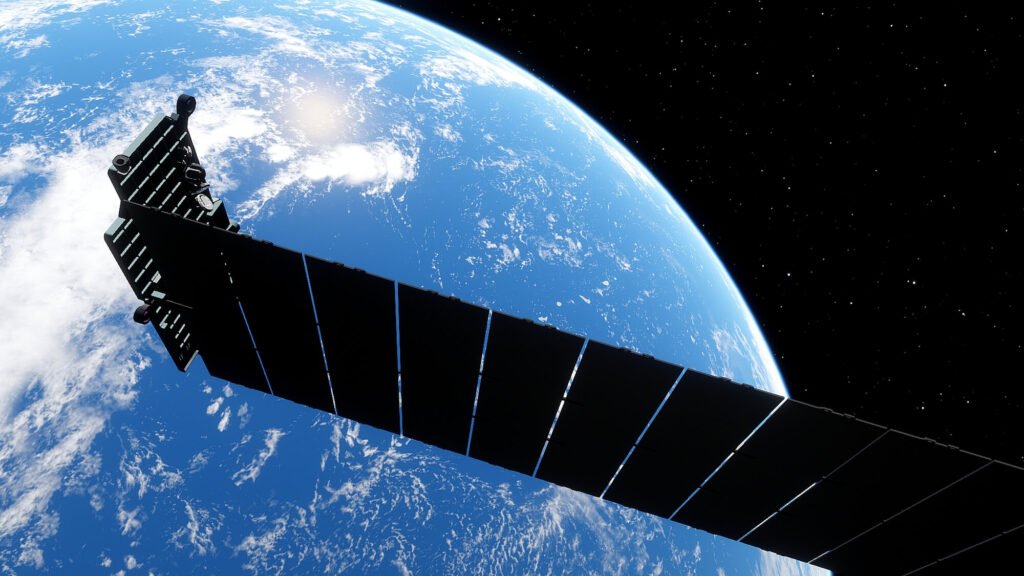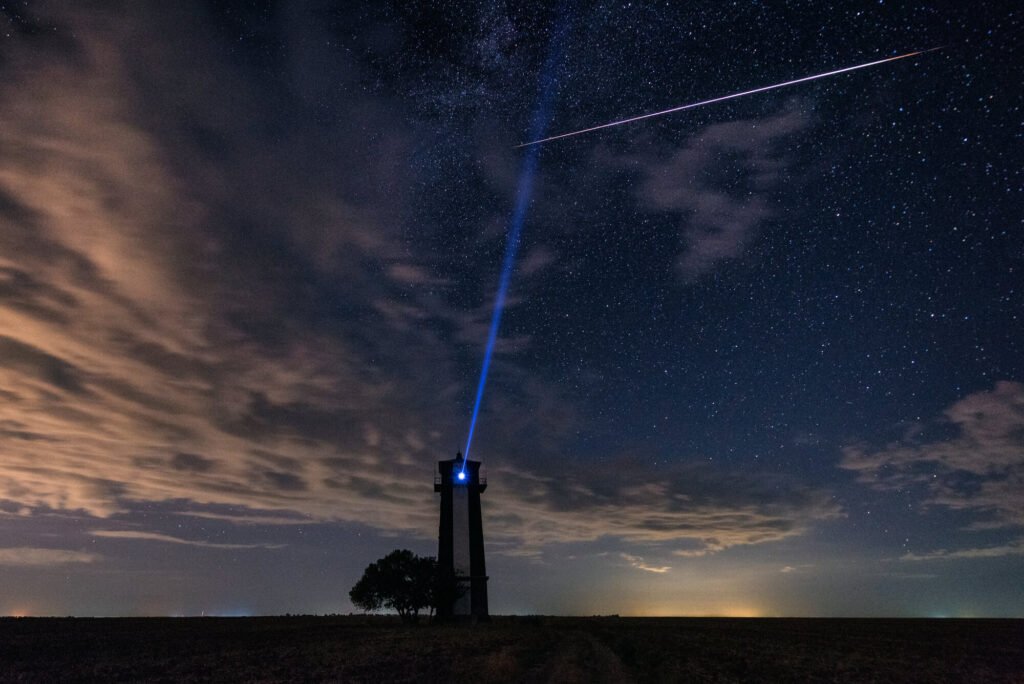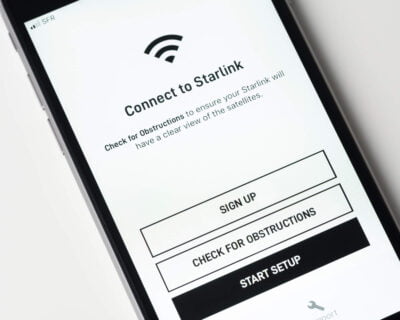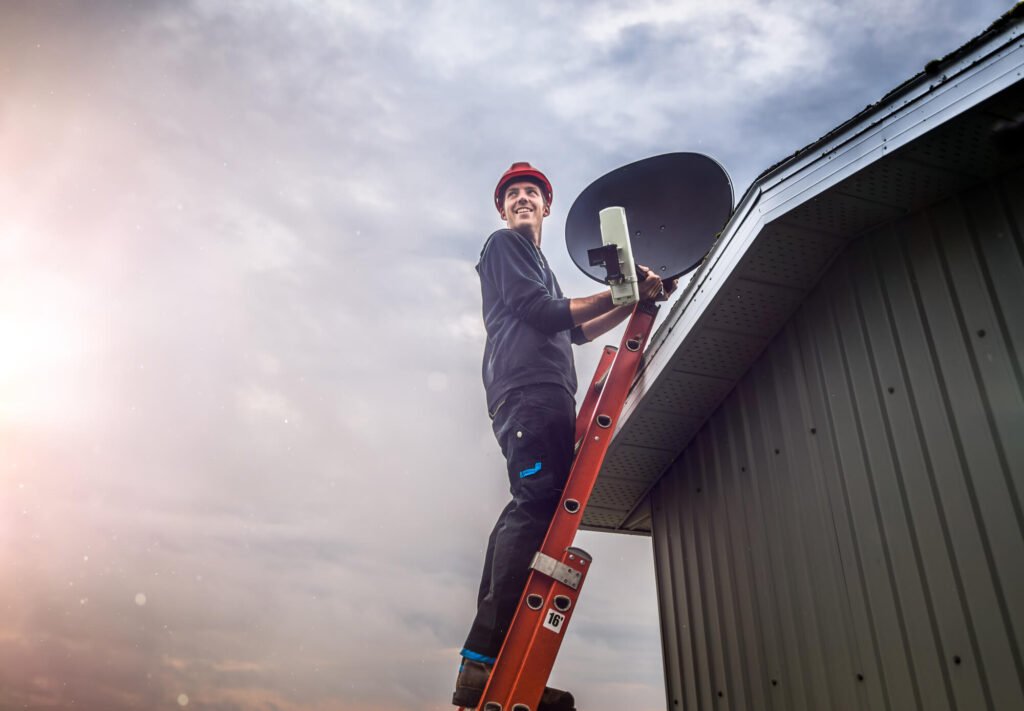Your Ultimate Guide to SpaceX’s Starlink
The Internet is a privilege but one that comes with essential benefits. As our lives become more dependent on technology, it’s strange to consider that a large majority of people globally do not have reliable access to high-speed internet.
Internet Service Providers (ISPs) know there is a gap; however, given the expense and time it takes to get cable access to everyone, everywhere, it’s safe to say there will always be pockets and regions that remain overlooked due to remoteness, lack of country stability or economy, or even too few people in the area to warrant the work. This is where Starlink comes in.
We’re not talking about streaming movies and online gaming, although you can do these too, and for the majority of early adopters, that’s the biggest plus of high-speed streaming.
What we are talking about is essential resources:
- Access to medical advice (via video) in remote areas that don’t have doctors, let alone specialists
- Online banking and financial services
- Emergency response assistance
- Staying in contact with distant family and friends
- Quality remote schooling
The great news is, in order to make these essential service connections possible, there needs to be a global network of satellites… which means everyone can have access to high-speed satellites for gaming, video streaming and conference calls, as well as essential services.


What is Starlink?
Starlink is a chain network of low orbiting satellites developed by SpaceX. The aim of the satellite constellation is to deliver high speed, reliable satellite internet globally, with a focus on rural and remote regions that don’t have access to cable internet.
Compared to current high orbiting satellites, Starlink uses small, lightweight satellites that can be manoeuvred using propulsion, which is useful for collision avoidance. These flying internet routers are solar-powered and work by orbiting the earth in a long chain. Each one communicates back to earth via multiple antennas that connect to user terminals positioned on the ground.
Starlink was developed to overcome the shortcomings of satellite communication companies that charge excessive prices with slow internet and significant lag and buffering periods.
Traditional satellites orbit high in the atmosphere – around 35,000kms from the surface. This distance causes lag and slow internet speeds, simply because the signals take so long to be received on the ground.
Starlink overcomes this by orbiting their satellites at much lower altitudes, at about 550kms, reducing travel times and increasing responsiveness with a set location 60 times closer to the Earth’s surface than before.
While still in the early stages now, SpaceX hopes to have as many as 42,000 satellites in orbit at one time to create a global coverage network. The satellites are designed to orbit in a chain so that as one satellite slips out of range, the next one relays in for seamless user connection.


Pros & Cons of Starlink
As with every service and product, it’s important to weigh up the pros and cons to see if the offer is the right match for your needs.
Pros
- High speed
Starlink expects download speeds to sit at around 100Mbps to 200Mbps with a latency of about 20 ms for the majority of its customers. When you consider that cable internet has a latency of 20-40ms, it’s looking pretty good.
In real life (taking into consideration system delays and external factors) Starlink’s delay will most probably be between 20-30 ms which is still competitive with cable and more than enough for regular use, including video conferencing, movie streaming, gaming, and web browsing.
So far, the early service delivery of Starlink has kept its promises, with speeds consistently above the 50-150Mbps range, even with limited satellites in orbit.
- Cost-effective
Starlink offers faster, more reliable services for better prices than traditional satellite service providers. While regional areas can find satellite contract plans for less than $100 a month, these have caps on data and speed – which quickly reach their limit and excess charges can be steep. For unlimited plans, it can cost $170 a month, not including the additional dish rental fee. These are also lock-in contracts, something you don’t have with Starlink.
In rural areas charges for Starlink are on par with current cable offers (minus the equipment fee). To compare speeds and prices with NBN providers, what you pay for broadband determines how much speed you get. So while you can get a standard monthly plan for as low as $60, you may only get 25Mbps at peak user times (7 pm to 11pm). If you want to get access to NBN speeds closer to Starlink’s, you’ll most likely be looking at monthly packages around the $100 mark – that is assuming of course you have access to NBN services providers.
- Availability in rural areas
Starlink will be available to everyone, regardless of country, region and remoteness. The more satellites that are launched, the greater the coverage will be including remote suburbs, boats and oil stations, regional areas and mountain-top properties. This brings great relief to those who were forced to use satellite connections previously, or go without.
- Disaster recoverability
There are circumstances where cable internet becomes disconnected or unusable, notably in times of disaster such as fire, flood, tornado or earthquake. Unfortunately, these are the exact times when reliable internet is critical for rescue, service information, connecting families and developing safe rescue plans.
It can take days or weeks to get into a region to carry out repairs after a disaster, and even then it’s expensive and time-consuming work to restore cable internet connectivity.
All you need for Starlink is the dish and a clear sky. SpaceX has thousands of base stations positioned globally that are able to pick up the slack if a section fails due to an emergency. That gives emergency response centres and personal live information to make disaster relief efforts safer, more precise and faster with help on hand and communication channels open for assistance.
Cons
- Slower in cities
Because users in a certain location are using the same satellites (those local to them at that point in the orbit) multiple users are all going to be using the same bandwidth. If that area is crowded with users -like a city- it’s going to put a lot of demand on a small cluster of satellites, reducing internet speeds.
Cable internet is able to lay more cables in denser areas to provide adequate services across large populations. Because the Starlink system is moving, there is no way to converge satellites to those locations that need more attention.
Just how slow the service will be remains to be seen. Time will tell, although even then the constant introduction of new satellites will directly balance the number of users coming on.
- Hardware installation
As well as paying for your Starlink equipment upfront, you are also charged with installing it yourself. The dish is not large and the receiver is easy to install, provided you have room on your property for it to go on the ground.
The issue users face is correct placement. You also need to be mindful of any tall structures like telephone poles and trees that can block signals.
While the dish is smart enough to adjust to get the ideal frequency, it needs to be placed in the right position with an open view of the sky to be able to achieve the minute self-corrections needed.
Most users resort to mounting their dish off the ground, either on a mast or rooftop in order to get a clear signal. You will need to purchase an additional roof mount and know in advance which one is right for your mounting location.
Because roof mounts are complex and dangerous work you will need a qualified installation professional with an electrician licence to handle the work. Also keep in mind that the attached cable is very short, so an electrician will be needed to provide a safe and waterproof extension to reach the power pack.
- Interruption from poor weather
Cable internet and satellite services can both be hampered by wild weather. The Starlink dish is equipped to melt snow so that it can stay clear, but a snowstorm, hailstorm, high winds, solar storms or torrential rain may cause interference and slow down your internet responsiveness. This has been the case with high orbit satellite providers in the past, however, the closer proximity of Starlink may decrease the severity of these disruptions.
Without a lot of in-field testing, it’s not clear how badly this will affect your service, it will depend on the severity of the weather in your local area as well as the sturdiness and accurate placement of your dish and connections.
Preparing Your Home for Starlink


SpaceX’s Starlink hardware is shipped to your door (for a fee), putting you in possession of your very own satellite dish and router.
Once your Starlink kit arrives you will simply need to access the Starlink app (available to registered customers only) to pinpoint the best location for your dish and mount. If you are lucky enough to be able to receive a great signal from the ground, it’s as simple as connecting the pieces and plugging it in – or plugging it in and connecting the pieces – the order really doesn’t matter.
The biggest challenge is in getting the placement right for a consistent service throughout the day. Even though this sounds simple enough, you will need reliable internet access to use the app and access the service portal if you have any questions. In most cases, you will need to hire a professional electrician with satellite installation experience to correctly and safely mount your dish to your roof.
There are a number of steps to achieve a safe and reliable roof mount:
- Order the correct roof mount to suit your roof style and shape
- Find the right platform that is easy to access for installation and any future repairs
- Ensure the location for the dish lines up with a suitable position for the Wi-Fi Router inside your home
- Fix the mount to the roof and make the drilled holes watertight
- Attach a longer cable to the fixed mounting and guide the connection through the roof (pinning loose cables down).
- Make a safe and seamless connection inside your home
- Waterproof the cabling and holes made for roof entry
- Test signal strength, upload and download speeds and latency


Cost of Starlink in Your Home
Getting started is the hardest part, price-wise. You will be required to buy all your Starlink equipment upfront. In Australia, the current equipment cost is $924 plus an additional $150 shipping. This brings your set-up fee to a total of $1,074. After that, it’s $139 AUD per month for unlimited internet access.
If you are mounting your dish high up, you’ll need to purchase an additional roof mount (the provided mount is for ground only), extra cabling as well as pay the installation fee for a professional service.
For those who don’t have access to fast and reliable internet available at their property, Starlink can provide access that is more efficient and cheaper than traditional satellite offers, with close to broadband speeds and latency, without having to wait for a service provider to dig to your door.
To make that investment work you will need to find the most efficient and secure location for your dish and have it installed by a professional electrician who knows about safe internet installations.
Absolutely On Time Electrical is your Licenced Starlink Installer. Ask us how we can help locate the best position and install your Starlink securely for fast and reliable satellite internet today.
